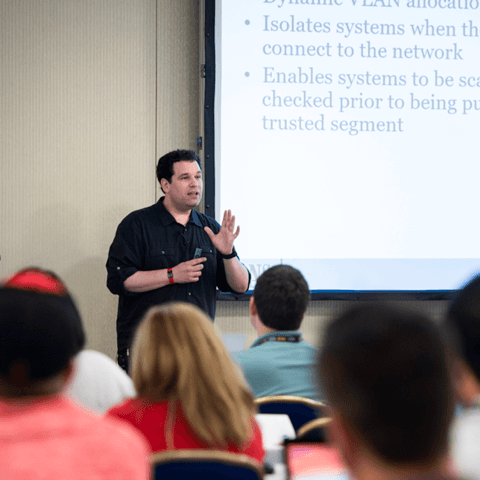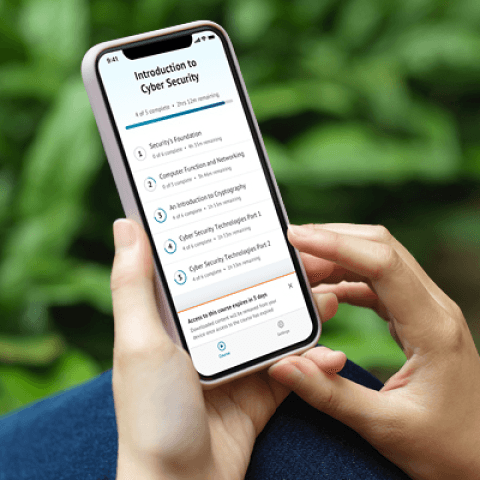SEC595: Applied Data Science and AI/Machine Learning for Cybersecurity Professionals


Experience SANS training through course previews.
Learn MoreLet us help.
Contact usBecome a member for instant access to our free resources.
Sign UpWe're here to help.
Contact UsApply your credits to renew your certifications
Attend a live, instructor-led class from a location near you or virtually from anywhere
Course material is geared for cyber security professionals with hands-on experience
Apply what you learn with hands-on exercises and labs
Security professionals gain critical skills to conduct safe, effective penetration tests and assessments in ICS/OT environments without compromising operational integrity.
The content from the labs in this section of the book, for me, had the biggest takeaways and were great sources of practical and actionable information for real in-world ICS testing.
Industrial Control Systems (ICS) and Operational Technology (OT) are increasingly targeted by adversaries, yet traditional penetration testing approaches often focus on the wrong outcomes and can cause unintended disruptions with severe consequences – including production outages, injury to personnel, loss of life, and environmental hazards.
ICS613: ICS/OT Penetration Testing & Assessments trains engineering, operations, and security professionals with the mindset, methodologies, and techniques to safely and appropriately conduct ICS penetration tests and security assessments, identify practical mitigations, and effectively communicate results to stakeholders and leadership to improve the operational resilience of ICS environments. As a specialized ICS pentesting course, ICS613 equips students to approach assessments with precision and safety in mind.


Jason Dely brings over 20 years of experience and a diverse industrial control system background to SANS and the industrial control system (ICS) community.
Read more about Jason Dely

Tyler Webb, Dragos Principal Penetration Tester and ICS613 co-author, teaches real-world OT penetration testing, giving students adversary and operational insight to strengthen assessments and turn findings into lasting security improvements.
Read more about Tyler Webb

A visionary OT security leader, SANS Principal Instructor, and USMC veteran, Don co-authored ICS613 and teaches ICS410. He translates years of frontline experience into safer, practical methods to empower defenders protecting critical infrastructure.
Read more about Don C. WeberExplore the course syllabus below to view the full range of topics covered in ICS613: ICS Penetration Testing and Assessments.
This section introduces passive and active security assessments for ICS environments, covering how to define goals, choose approaches aligned with industry standards, apply frameworks and threat intelligence, understand terminology, and analyze impacts of assessments on physical equipment operations.
This section prepares students to plan, execute, and deliver effective ICS security assessments. Students learn methodical preparation through documentation analysis, protocol identification, communication manipulation, and security posture assessment, while emphasizing stakeholder collaboration.
This section introduces a top-down penetration methodology aligned with the ICS Cyber Kill Chain. Students learn to execute engagement objectives in simulated production environments using "living off the land" techniques while focusing on privilege escalation and OT boundary pivoting.
This section covers a bottom-up approach to ICS attack identification aligned with the ICS Cyber Kill Chain.Students learn to develop realistic attack scenarios with expected physical consequences, and demonstrate attacks in controlled environments, while emphasizing stakeholder collaboration.
This culminating section allows students to apply all skills learned throughout the course in a comprehensive hands-on exercise against the ICS613 kit and in-class physical range, identifying vulnerabilities and recommending improvements to enhance ICS defenses.
This role conducts cybersecurity tasks for Industrial Control Systems and Operational Technologies (ICS/OT). Find the SANS courses that map to the Industrial Control Systems and Operational Technologies SCyWF Work Role.
Explore learning pathDiscovers system vulnerabilities and works with asset owners and operators to mitigate discoveries and prevent exploitation from adversaries.
Explore learning pathAcquires and manages resources, supports, and performs key industrial security protection while adhering to safety and engineering goals.
Explore learning pathGreat course and a lot of great content discussion with tons of applicable, real-life thoughts, processes, examples, and in-depth descriptions.
This course is immensely educational.
The content from the labs in this section of the book, for me, had the biggest takeaways and were great sources of practical and actionable information for real in-world ICS testing.
The sections referring to real-world events really solidified the fact that you need to be careful when dealing with anything OT-related.

Get feedback from the world’s best cybersecurity experts and instructors

Choose how you want to learn - online, on demand, or at our live in-person training events

Get access to our range of industry-leading courses and resources